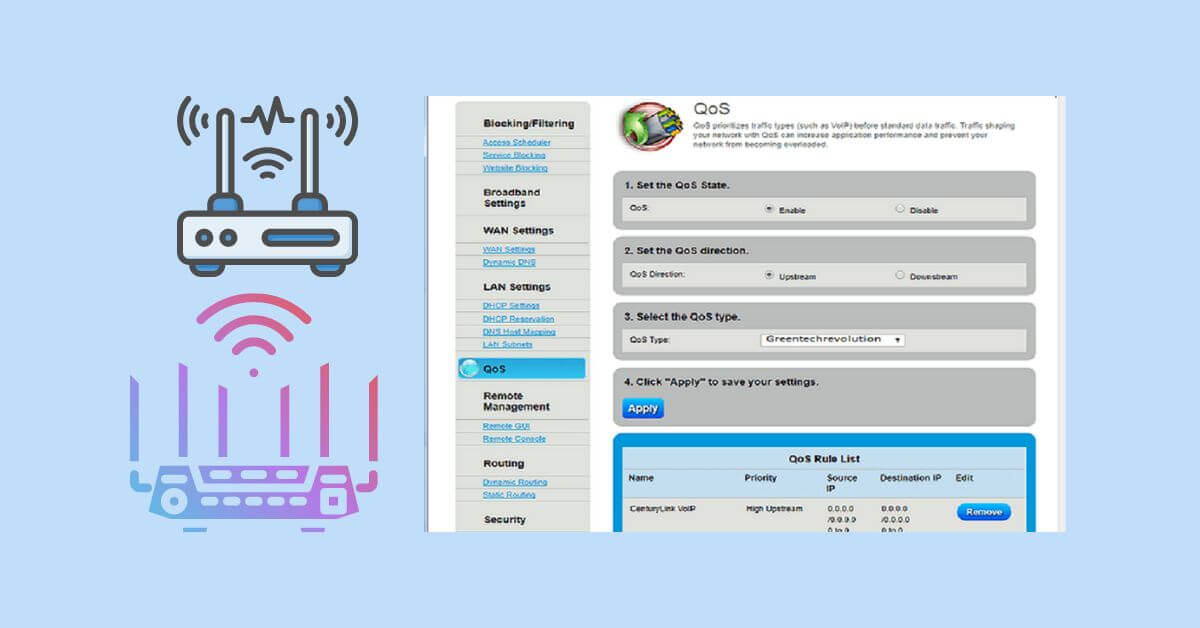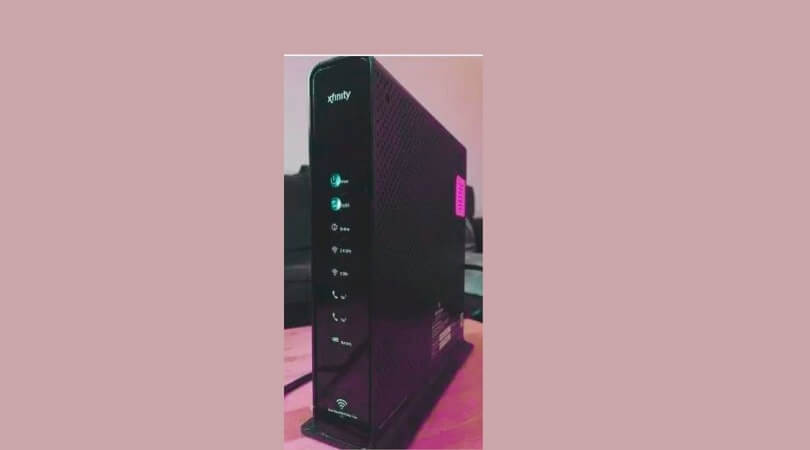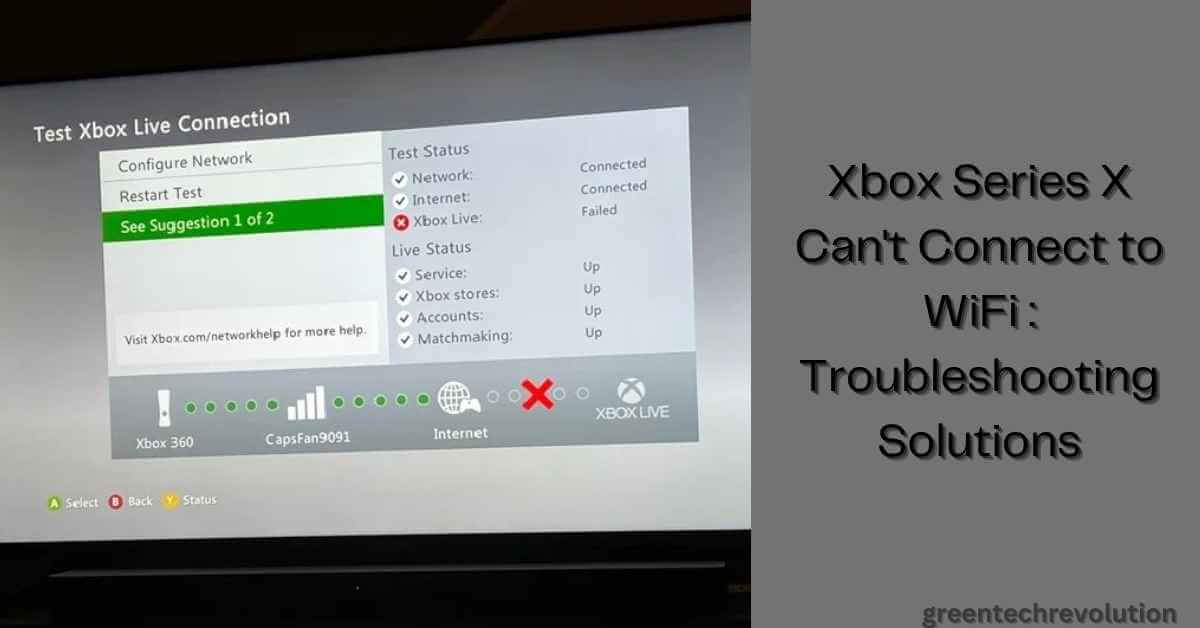Can I Add More Ethernet Ports to My Router? Yes, you can add more ethernet ports to your router easily. Simply add a switch or hub to extend the number of ethernet ports available.
If you are running out of ethernet ports on your router and need to connect multiple devices, there is a simple solution. By adding a switch or hub, you can easily extend the number of ethernet ports available. A switch is recommended over a hub as it provides better performance and security for your network.
All you need to do is connect the switch or hub to one of the ethernet ports on your router, and then connect your devices to the additional ports on the switch or hub. This is a cost-effective way to expand your network without having to buy a new router or deal with the hassle of wireless connections.
Types Of Routers And Ethernet Ports
Are you tired of having to unplug one device to make room for another? Adding more ethernet ports to your router is an efficient solution. We’ll discuss the different types of routers and their ethernet port configurations, along with the important role that ethernet ports play in establishing wired connections for devices.
Different Router Types And Their Ethernet Port Configurations
Wired Router
A wired router is a traditional router that provides a wired connection to multiple devices. It comes equipped with several ethernet ports, typically ranging from four to eight.
Wireless Router
Wireless routers not only provide a wireless connection but also come with ethernet ports. This allows for a wired connection in addition to wireless connectivity. A wireless router usually has fewer ethernet ports ranging from one to four.
Mesh Router
A mesh router is a wi-fi system that provides a strong wireless signal throughout a larger area. A mesh router system usually has a base unit and additional satellite units, each with their ethernet ports.
Ethernet Switch
An ethernet switch is a device that allows you to connect multiple devices to your router using ethernet cables. It has several ethernet ports, ranging from five ports to 24 ports, depending on the model.
Ethernet ports play a crucial role in establishing wired connections for devices. Knowing the different types of routers and their ethernet port configurations can help you choose the right router for your needs. It can also help you decide if you need to add an ethernet switch to expand your wired connection options.
Stay connected with the right router and ethernet ports.
Determining The Need For Extra Ethernet Ports
Analyzing Your Current Network Setup To Decide If You Need More Ports
If you are struggling to connect all your wired devices to your router, you might be wondering if you need to add more ethernet ports to your network. Before you invest in extra hardware, it’s important to determine if you really need additional ports.
Here are some key points to consider:
- Count the number of ethernet ports on your router: The first step is to figure out how many ethernet ports your existing router already has. If you’re using an older model, it may only have 1 or 2 ports, while newer models may have 4, 8 or even more.
- Tally up your wired devices: Take an inventory of all the devices that need to be connected via ethernet. This may include desktop computers, gaming consoles, smart tvs, network-attached storage devices and more.
- Consider the distance from your router: Ethernet cables have a maximum length of 100 meters. If your devices are located far away from your router, adding more ports might not help if the cables can’t reach.
- Think about your internet speed: If you’re paying for a high-speed internet connection, adding more ethernet ports won’t necessarily improve your internet speed. The speed is determined by your internet service provider (isp) and the modem connected to your router.
By analyzing your current network setup, you can determine if adding more ethernet ports is necessary.
The Pros And Cons Of Adding Extra Ethernet Ports To Your Network
If you have evaluated your network and determined that adding more ethernet ports is necessary, here are some pros and cons to consider before you make a purchase:
Pros:
- You can connect more wired devices: If you have more ethernet ports, you’ll be able to connect more wired devices to your network, making it easier to enjoy high-speed internet with all your equipment.
- Improved speeds for wired devices: When you add more ethernet ports, you may see improved speeds for some of your wired devices as they will no longer have to share a single port.
- Better security: Wired connections are generally more secure than wireless, so if you have sensitive devices that need to be connected to the internet, adding more ethernet ports can help keep your data safe.
Cons:
- Additional cost: Purchasing additional hardware can be expensive, especially if you need to buy a new router or switch to accommodate more ethernet ports.
- More clutter: More ethernet cables can add to the clutter in your home or office.
- Limited scalability: Adding more ethernet ports can help in the short-term, but if you continue to add devices, you may eventually run out of ports again.
It’s important to weigh these pros and cons before making a decision to add more ethernet ports to your network.
Upgrading Your Router To Support More Ethernet Ports
Is your router equipped with only a couple of ethernet ports, and you’re faced with a situation where you need to connect more devices to the internet? Don’t worry; you don’t have to replace the entire router. Upgrading your router can help solve this problem.
In this blog post, we will discuss the steps involved in upgrading a router to enable more ethernet ports, and factors to consider before doing so.
The Steps Involved In Upgrading Your Router To Enable More Ethernet Ports
Upgrading a router to support more ethernet ports is relatively simple, and here are the steps involved:
- Determine the number of ethernet ports you need: First, determine the number of ethernet ports you need for your devices. This will help to guide you in selecting a suitable upgrade.
- Check the router’s specifications: Before making any purchase, check your router’s specifications and ensure that you’re getting an upgrade that is compatible with it. You can check your router’s manual or the manufacturer’s website to know the specifications.
- Purchase an ethernet switch: An ethernet switch is an affordable device that can expand the number of ethernet ports on your router. Purchase a switch that has the number of ports you need. For instance, you can get a switch with 5, 8, or 16 ports, depending on the number of devices you need to connect.
- Connect the ethernet switch to your router: Connect the switch to your router using an ethernet cable. Plug the ethernet cable into one of the lan ports on the router and into the uplink port on the switch.
- Connect your devices to the switch: Lastly, connect your devices to the switch, either using ethernet cables or wirelessly. That’s it! You can now connect even more devices to the internet.
Factors To Consider Before Upgrading Your Router
Upgrading a router is just like any other technical decision. You should consider some factors to make the right choice for your situation. The following are factors to consider before upgrading your router:
- Compatibility: Ensure the upgrade you’re purchasing is compatible with your router’s specifications.
- Port: Determine the number of ports you need before purchasing. You don’t want to purchase a switch that has fewer ethernet ports than you need.
- Speed: Consider the internet speed you require. A router with gigabit ethernet ports is necessary if you’re engaging in activities such as gaming or high-resolution video streaming. If you need your ethernet switch to provide power to connected devices, consider getting a switch with power over ethernet (poe).
- Brand: Ensure that you’re purchasing an upgrade product from a reputable brand to receive a device that is reliable and durable. A good-quality device will save you money and time in the long run, as it will last longer and be more dependable.
Upgrading your router will enable you to connect more devices to the internet without having to get rid of your current router. By following the steps outlined in this blog post, you’ll have expanded the number of ethernet ports on your router in no time.
Remember to consider your specific needs before purchasing a router upgrade, and you’ll be good to go.
Switches And Hubs: Innovative Ways To Add Ethernet Ports To Your Network
Understanding The Role Of Switches And Hubs In Extending The Number Of Ethernet Ports In Your Network
If you are running out of ethernet ports on your router, you may be wondering how to expand them. One solution is to use either a switch or a hub. Both of these devices can allow you to add more ethernet ports to your network.
However, understanding the difference between them is crucial in deciding which one is best suited for your situation.
Here are some key points to consider:
- A switch permits data transfer between devices on the same network, while a hub broadcasts all data to every device within the network.
- Switches typically have a higher price point, but they offer greater security and efficiency.
- Hubs are less expensive than switches, but their broadcast nature can cause network lag, which can hinder the performance of your network.
Pros And Cons Of Using Switches And Hubs To Add Ethernet Ports
Now that you understand the difference between switches and hubs, it’s essential to weigh the pros and cons of each option when considering adding more ethernet ports to your network.
Switches:
- Pros:
- Enhanced network security
- Increased network efficiency
- Reduced network collision
- Greater flexibility in managing network traffic
- Cons:
- Higher price point than hubs
- Requires more technical expertise to configure and manage
- Limited expansion options
Hubs:
- Pros:
- Less expensive than switches
- Simple plug-and-play installation
- Widespread compatibility with different network devices
- Cons:
- Lag caused by broadcast nature can slow down network performance
- Insecure network connections, as data is broadcasted to all devices
- Limited expansion options
Both switches and hubs have their unique benefits and drawbacks when adding more ethernet ports to your network. Ultimately, your decision should be based on your specific needs, budget, and technical expertise.
Wired Vs. Wireless Connections: What Works Best For Your Home Or Office Network
Examining The Differences Between Wired And Wireless Connections
Do you think about whether a wired or wireless connection would be better for your home or office network? Let’s delve a little deeper into the differences between wired and wireless connections.
Wired Connections
- A wired connection uses a physical line to connect two devices which is fast and reliable.
- A wired connection is a perfect choice if you are using a device that is stationary and if you have a lot of devices to connect.
- Ethernet has higher throughput and lower latency compared to wireless.
- Wired connections are not susceptible to interferences, unlike wireless connections.
Wireless Connections
- A wireless connection is ideal when you want to be mobile while using your device or if you want to connect devices that are at some distance from each other.
- A wireless connection is typically slower than a wired connection; however, it is great for surfing the internet, streaming audio, and video.
- A wireless connection is prone to interferences from other devices and physical obstructions.
Considering The Benefits And Drawbacks Of Both Types Of Connections
It is now clear that wired connections offer fast and reliable connectivity while wireless connections are known for their mobility. However, there are other benefits and drawbacks you should consider if you are to decide which type of connection will work best for you.
Benefits Of Wired Connections
- Wired connections offer reliability and speed; wired connections are less likely to drop connections.
- Wired connections do not require any passwords or security protocols to keep them secure.
- Wired connections offer an unshared connection thus affording you the full bandwidth.
Drawbacks Of Wired Connections
- Wired connections require more upfront equipment and installation costs.
- Wired connections are restricted to the length of the wire which might be limiting.
Benefits Of Wireless Connections
- Wireless connections enable flexibility and mobility that wired connections do not offer.
- Wireless connections allow connectivity within the range of the wireless router, making it possible for devices to be physically located away from the router.
Drawbacks Of Wireless Connections
- Wireless connections can become unstable if too many devices are connected at once; sharing bandwidth throttles the speed down for it to work for everybody.
- Wireless connections are vulnerable to interferences from other devices, such as microwaves, cordless phones, or other wireless networks.
By evaluating the benefits and drawbacks of both wired and wireless connections, you will make an informed decision that will work best for you.
How To Set Up A Switch Or Hub
The Step-By-Step Process Of Setting Up A Switch Or Hub
So, you want to add more ethernet ports to your router and you’re considering setting up a switch or hub. Here are the steps to follow:
- Choosing a switch or hub: First, decide whether you need a switch or hub. A switch is the better choice as it can handle more traffic and is faster than a hub. A hub, on the other hand, is slower and may cause network congestion if too many devices are connected.
- Connect the devices: To connect the switch or hub, plug in an ethernet cable from your router to the switch/hub.
- Choose port: Pick a port on your switch/hub and connect an ethernet cable from it to your device.
- Repeat: Repeat step 3 until all the devices are connected.
- Power up: Finally, plug the switch/hub into a power source and power it on.
Configuring And Optimizing Your Network After Setting Up The New Switch Or Hub
After setting up your new switch or hub, it’s time to optimize your network. Here’s how:
- Test network speed: Use an online speed test to ensure that the speed of your network is fast enough; if not, consider upgrading your plan.
- Ping test: Use a ping test tool to ensure that the switch/hub is working correctly.
- IP settings: If your devices are not connecting properly, verify IP settings, and ensure that DHCP is enabled.
- Firmware upgrade: Check for firmware upgrades for your router and switch/hub.
- Connection check: Re-check all the connections to ensure that all devices are connected properly.
Congratulations! You’ve successfully added more ethernet ports to your router and optimized your network.
Common Pitfalls To Avoid When Adding Ethernet Ports
Adding ethernet ports to your router may seem like a great idea, but many users frequently make mistakes that can cause network issues. Therefore, if you’re planning to add extra ethernet ports to your router, there are some common pitfalls you should avoid to ensure that you don’t disrupt your current network setup.
We’ll discuss these common pitfalls and provide troubleshooting tips for network errors that may arise when adding extra ethernet ports.
Common Mistakes Made By Users When Adding Extra Ethernet Ports And How To Avoid Them
When adding ethernet ports, it’s normal to experience some hitches. Here are some mistakes you should avoid:
- Ignoring the router’s capabilities: Not all routers have the ability to support additional ethernet ports, so it’s crucial to check if your router has a built-in switch. That being said, the majority of modern routers have at least one extra ethernet port.
- Not understanding your network: Before adding extra ethernet ports, you should have a clear understanding of the setup of your current network to avoid possible compatibility issues.
- Not using the correct ethernet cable: You must use the correct ethernet cable to connect the switch and the router. If you’re using a gigabit ethernet switch, you should upgrade to a cat6 cable instead of using an old ethernet cable.
Troubleshooting Tips For Fixing Network Errors Arising From Adding Extra Ethernet Ports
After adding extra ethernet ports, if you experience network issues, there are several troubleshooting tips that you can use to fix the issues. Here are some of them:
- Check your connections: Make sure your connections are correctly attached and that the cables are in good condition. A loose connection can also cause network issues.
- Check your configuration settings: Ensure that your router’s settings are configured correctly. Double-check the dhcp settings to avoid assigning the same ip addresses to multiple devices.
- Restart your devices: Sometimes, simply restarting your devices can solve the network issues that arise after adding extra ethernet ports.
- Update your router’s firmware: Ensure that your router’s firmware is updated. Firmware updates often include bug fixes that can help resolve network issues.
Adding extra ethernet ports to your router can be beneficial, but it’s imperative to properly configure your network settings. By avoiding the common mistakes discussed above, you can ensure that your network remains stable and secure. In case you experience any network errors, follow the troubleshooting tips to fix them quickly and efficiently.
Powerline Adapters: An Alternative To Adding Ethernet Ports
Can I Add More Ethernet Ports To My Router
Are you looking to add more ethernet ports to your router, but unsure how to proceed? Luckily, you have a few options available to give you the flexibility you need. One alternative to adding ethernet ports directly to your router is to use powerline adapters.
In this section, we’ll explore this option in more detail including understanding how powerline adapters work and comparing their pros and cons with adding extra ethernet ports.
Understanding Powerline Adapters And How They Work
A powerline adapter is a device that uses your home’s existing electrical wiring as a network connection. The adapter has two parts: one that plugs into an electrical socket near your router and the other that plugs into an electrical socket near the device that requires a network connection.
Here’s what else you should know about powerline adapters:
- The adapter uses existing electrical wiring to pass network signals between the two devices without the need for additional cables.
- Powerline technology is suitable for most households and shouldn’t affect other devices that depend on the electrical wiring.
- These adapters are designed to offer a simple alternative for delivering a network connection to multiple devices in different locations in your home.
Comparing The Pros And Cons Of Powerline Adapters To Adding Extra Ethernet Ports
When deciding whether to use powerline adapters or add extra ethernet ports, there are several factors to consider. Here are some pros and cons of powerline adapters:
Pros:
- Easy to install – no additional cables are required outside what’s already in the walls.
- Works better than wi-fi – powerline adapters tend to be a more reliable option compared to wi-fi, which can sometimes experience interference from other appliances.
- Suitable for long distances – powerline adapters can work reliably over long distances, making them a good option for larger homes.
Cons:
- Slower speeds – powerline adapters’ speeds can be slower than directly connecting to an ethernet port.
- Dependence on electrical wiring – powerline adapters need to work within the constraints of your home’s existing electrical wiring. In some cases, the wiring can cause reliability issues with powerline adapters.
- Cost – powerline adapters can be more expensive than adding an additional ethernet port.
Powerline adapters are an excellent alternative to adding ethernet ports to your router, especially if you don’t want to deal with additional cables. However, it’s essential to understand the pros and cons before making a decision that best fits your needs.
Extending Ethernet Ports: Risks And Precautions
Risks Associated With Adding Extra Ethernet Ports To Your Network
Expanding your router’s ethernet ports might seem like an easy solution, but there are risks associated with it, which you should be aware of. Here are some main concerns:
- Overloading the router: If you add too many devices on your router, it may start to have problems handling their demands. Overloading may lead to poor performance, signal dropouts, and other connectivity issues.
- Security vulnerabilities: Every active ethernet port presents an opportunity for hackers to gain access to your network. They can take advantage of poorly secured ports and bypass your security measures to gain access to your connected devices and their data.
- Physical damage: Adding more ethernet ports may require modifications to your router, which could damage it. Your router may also begin to overheat or malfunction due to the additional workload.
Precautions To Take Before And After Adding Extra Ethernet Ports To Reduce Risks
To ensure a safe and hassle-free experience, here are some precautions that you can take to minimize the risks of adding extra ethernet ports:
- Check your router’s capacity: Make sure that your router can support the additional devices that you’re planning to connect. It’s recommended that you don’t exceed more than five to six active ports, depending on your router’s specifications.
- Use a switch: A network switch can help to extend your ethernet connectivity without overloading your router. It’s a safe and flexible solution that can handle a large number of devices while providing better network performance and security.
- Update your firmware and security settings: Keep your router’s firmware and security settings updated to the latest version to prevent unauthorized access. Create a strong password for your wifi and ethernet ports, and avoid using default login credentials.
- Manage your bandwidth: Monitor your bandwidth usage and prioritize your devices based on their importance. This will help to avoid congestion and maintain network stability. You can also use quality of service (Qos) in your router’s settings to regulate bandwidth allocation effectively.
- Inspect your router regularly: Check your router’s physical condition periodically to ensure that it’s not overheating, and all cables and ports are securely connected. Clean it regularly to prevent any dust or debris accumulation that may cause an internal short-circuit.
Adding more ethernet ports to your network is a practical solution for many people. However, it’s important to consider the risks and take necessary precautions to maintain your network’s integrity and security. Following these guidelines can save you from potential headaches down the line and keep your network running smoothly.
How To Evaluate Your Network Performance After Adding Ethernet Ports
Many people face the issue of not having enough ethernet ports on their router to connect all their devices. The good news is that it is possible to add more ethernet ports to your router. However, the addition of extra ethernet ports to a router can impact network performance.
Methods For Determining The Impact On Network Performance After Adding Extra Ethernet Ports
Before adding more ethernet ports to your router, it is important to evaluate the impact it may have on your network performance. Here are some methods to determine the impact:
- Conduct a speed test: Conduct a speed test before and after adding extra ethernet ports to your router. A speed test can help you to identify if the network performance has improved or declined.
- Evaluate network latency: Network latency can tell you how long it takes for data to travel from your device to the internet. The addition of extra ethernet ports to a router can increase network latency. Use network latency tools such as part and ping plotter to test network latency before and after adding extra ethernet ports.
- Monitor network traffic: Network traffic refers to the amount of data that is sent and received from your network. Before adding extra ethernet ports, monitor network traffic to establish the amount of data being sent and received. Afterward, monitor network traffic to see if there is an increase or decrease in the amount of data being sent and received.
Tools And Techniques For Optimizing Network Performance After Upgrading
Once you have added extra ethernet ports to your router, optimizing network performance is essential. Here are some tools and techniques that can help:
- Use quality of service (QoS): Qos allows you to prioritize network traffic, ensuring that essential traffic receives the required bandwidth. Configure your router’s qos settings to cater to your network’s needs.
- Upgrade your router’s firmware: Firmware upgrades can boost a router’s network performance and security. Check for available firmware upgrades and apply them to your router.
- Consider network segmentation: Network segmentation involves dividing a network into smaller networks that are easier to manage. If your network is large and complex, network segmentation can help to optimize network performance.
Adding extra ethernet ports to a router can impact network performance. Therefore, it is essential to evaluate the impact on network performance before adding extra ethernet ports. Once extra ports have been added, optimizing network performance through tools such as qos and network segmentation can help to ensure a seamless experience.
Scalability And Future Expansion Of Your Network
As your home or office network grows, the need for more ethernet ports increases. Your router comes with a limited number of ethernet ports, which may not be enough to accommodate your growing networking needs. Fortunately, you can add more ethernet ports to your router to expand your network’s capacity.
Scaling and upgrading your network can be effortless if you follow these simple tips.
Tips For Designing Your Network To Be Easily Scalable And Adaptable To Future Expansions
Designing a network that is easily scalable and adaptable to future expansions requires careful consideration. Here are some tips to keep in mind when planning your network design:
- Keep your network’s future needs in mind when selecting your router, switches, and other networking components.
- Plan ahead by ensuring that your router has enough processing power to handle your network’s future demands.
- Use standard networking components for easy scalability.
- Always keep your router’s firmware up to date.
Preparing For Future Expansions And Upgrades In The Number Of Ethernet Ports
If you wish to add more ethernet ports to your router, the following options will be available:
- Purchase a network switch. By purchasing a network switch, you can increase the number of ethernet ports on your network and connect multiple devices to your router.
- Install an ethernet hub. When a hub is connected to your router it creates more ports for your network.
- Upgrade your router. If your router is compatible, consider upgrading the router to include more ethernet ports.
Remember, before purchasing any networking component for your network, it’s important to do the research, ensure the device is compatible and keep in mind your future networking requirements. With careful consideration and planning, expanding your network with more ethernet ports can be hassle-free.
Remember, owning an expandable and scalable network is vital in today’s world of modern technology. By following these simple tips, preparing for the future, and upgrading your networking components when necessary, you can keep your network optimized and running efficiently.
Frequently Asked Questions On Can I Add More Ethernet Ports To My Router
Can I Connect Multiple Devices To One Ethernet Port On My Router?
No, you can only connect one device to one ethernet port on your router.
How Many Ethernet Ports Does A Typical Router Have?
Most routers have 4 ethernet ports, but some may have more or less.
Can I Add More Ethernet Ports To My Router?
Yes, you can add more ethernet ports to your router using a switch.
What Is An Ethernet Switch?
An ethernet switch is a device that expands the number of ethernet ports on a network.
How Do I Connect An Ethernet Switch To My Router?
Connect one end of an ethernet cable to a port on the switch and the other end to a port on the router.
How Do I Configure An Ethernet Switch?
Plug it into your router, and it should work without any additional configuration.
Can I Add Both Wired And Wireless Devices To My Router?
Yes, most routers support both wired and wireless connections.
How Do I Know If My Router Supports Gigabit Ethernet?
Check the model number or specifications on your router’s manufacturer website.
What Is The Benefit Of Gigabit Ethernet?
Gigabit ethernet provides faster internet speeds and faster data transfer between devices.
Is It Easy To Set Up An Additional Ethernet Port On My Router?
Yes, it is relatively easy to set up an additional ethernet port using an ethernet switch.
Final Thoughts
To sum up, adding more ethernet ports to your router is possible by using an ethernet switch. It is an affordable way to expand your network without having to replace your old router or buy a new expensive one. Before purchasing a switch, determine the number of devices you want to add and the kind of switch that suits your needs.
Also, ensure that your router supports the speed of the switch you want to buy. Connecting an ethernet switch to your router is a simple process. You only need to plug it into an available ethernet port on your router, and you are good to go.
With a switch, you can enjoy higher internet speeds, increased reliability, and stable connections across all connected devices. So, if you need more ethernet ports for your home or office network, an ethernet switch is the solution.











Leave a Reply
You must be logged in to post a comment.